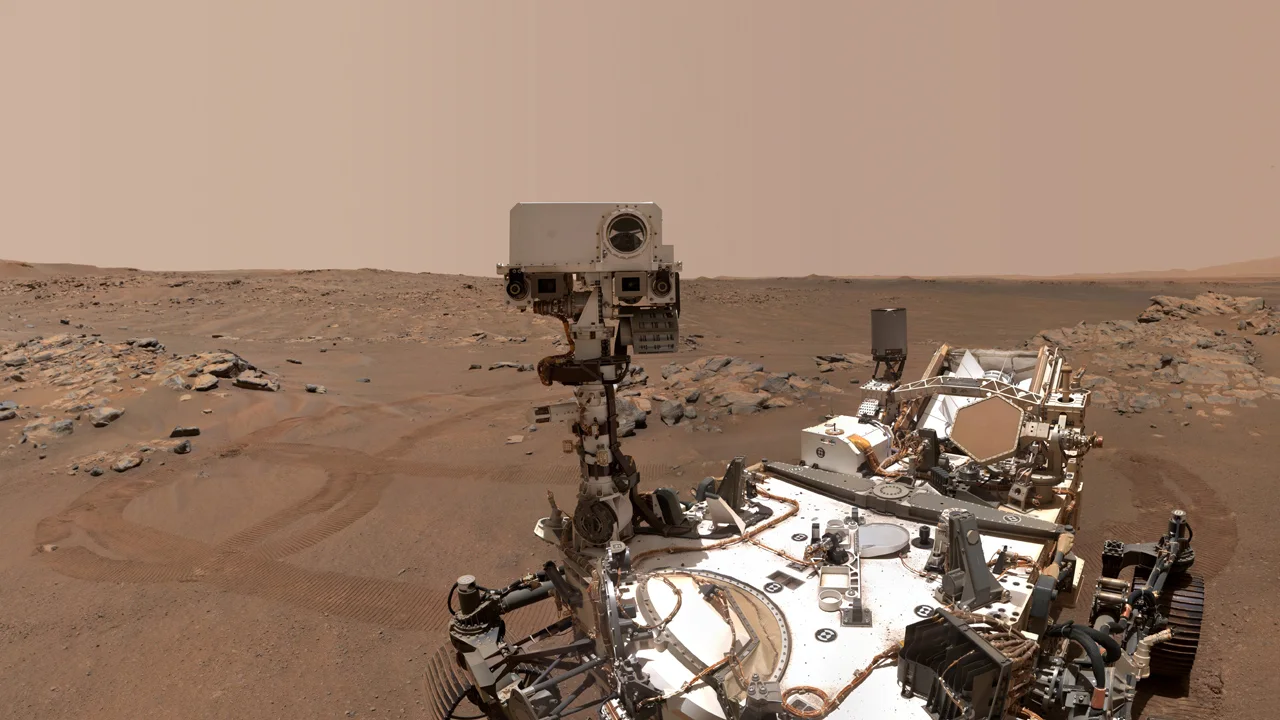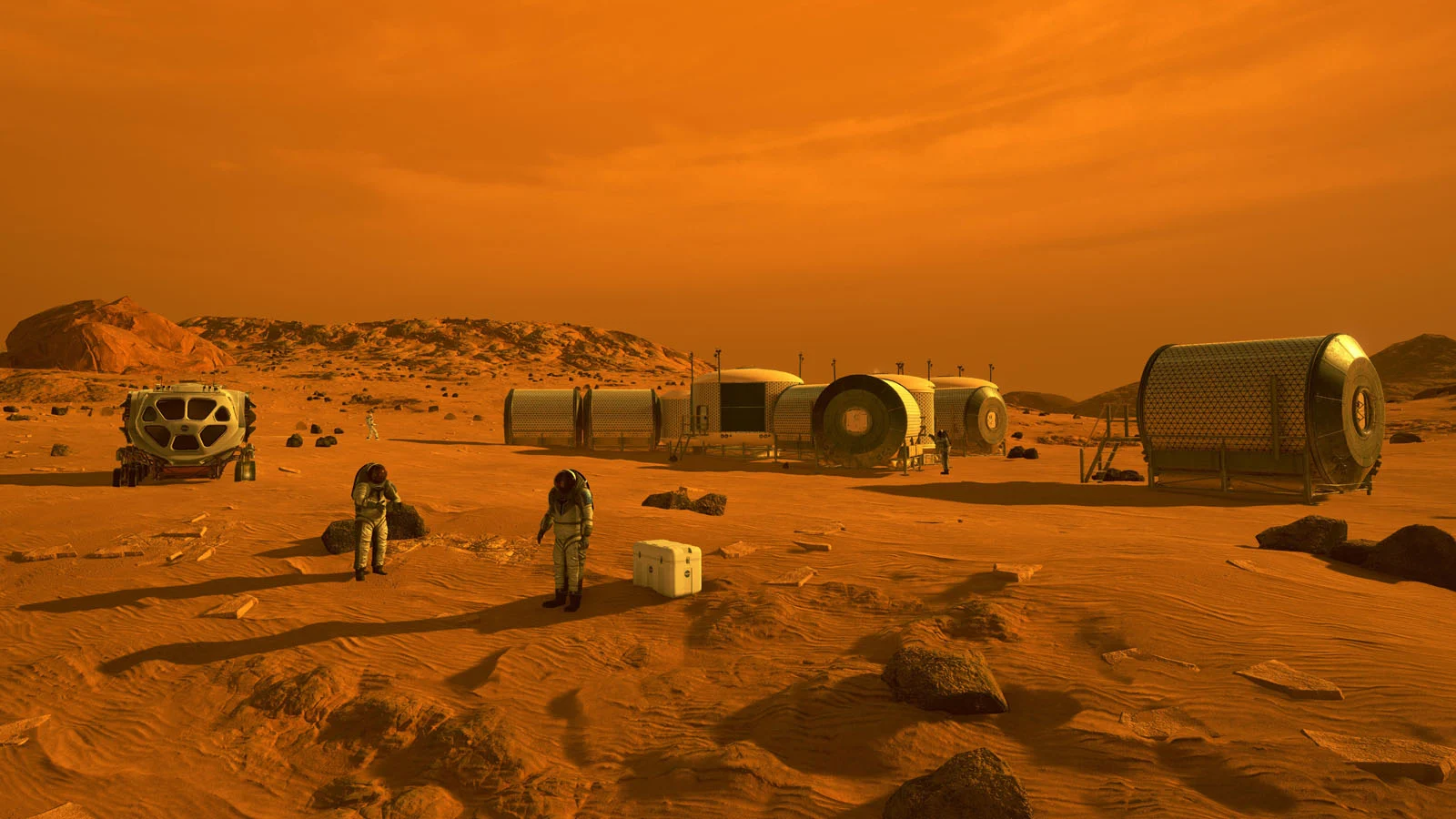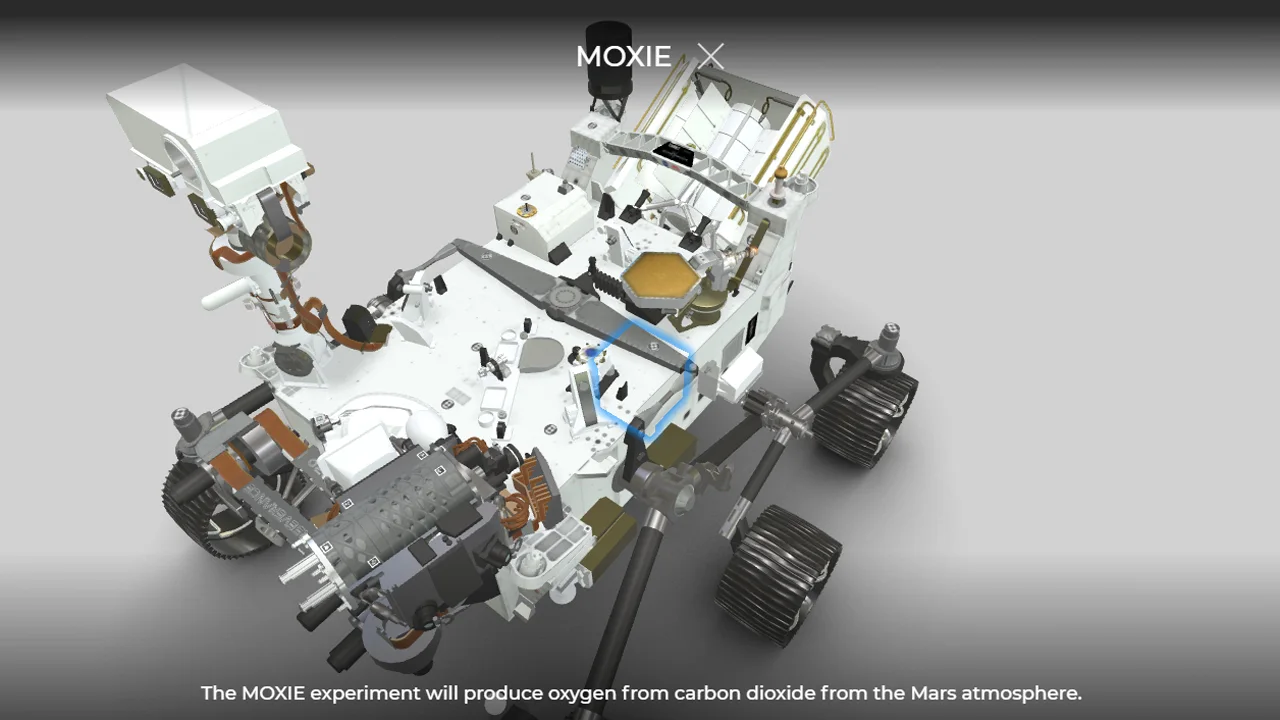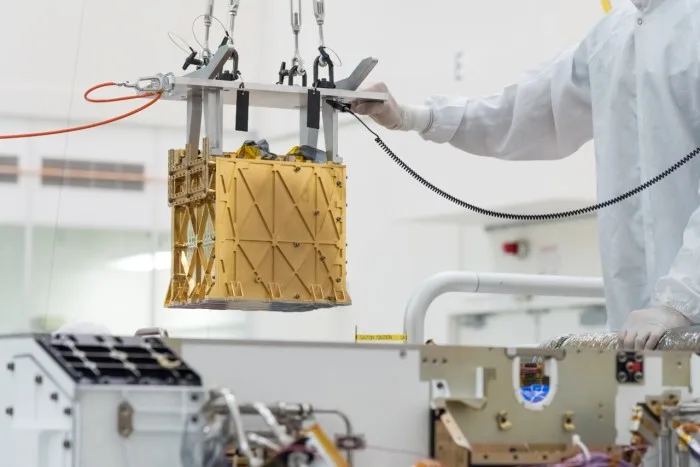
Perseverance rover proves we can reliably produce oxygen on Mars
There's now one less thing to worry about when we finally send humans to Mars.
MOXIE, an instrument on NASA's Perseverance rover, has shown that we can reliably generate life-sustaining oxygen from the thin carbon dioxide atmosphere of Mars.
One of the most important considerations for sending humans to Mars is whether they will have the resources to live when they get there. The atmosphere of Mars is extremely thin (roughly 1/100th of the density of Earth's atmosphere), but it is also primarily made up of carbon dioxide — a gas that is poisonous to us.
Future astronauts visiting the Red Planet will need oxygen on the ship that carries them there and back. They will also need a supply to sustain them during their stay on the surface, and even more will be required to launch them back into space at the end of their stay.

In this illustration, astronauts explore the surface of Mars in a future space mission. Credit: NASA
If they carry all of that oxygen with them from Earth to Mars, though, it will actually make the mission more difficult and more expensive. This is due to the mass and weight of the oxygen, as liquid oxygen is actually heavier than water. Thus, you'd need a bigger rocket (or more trips) to get all of that extra mass into orbit from here on Earth. You'd also need more thrust to send you on your way to Mars, and a more powerful rocket to safely land once you reach your destination.
However, if you had a way to generate oxygen directly from the Martian environment, you could avoid all that extra mass and extra complication. That's where MOXIE comes in.
"To support a human mission to Mars, we have to bring a lot of stuff from Earth, like computers, spacesuits, and habitats," Jeffrey Hoffman, the MOXIE deputy principal investigator at MIT, said in a press release this week. "But dumb old oxygen? If you can make it there, go for it — you're way ahead of the game."
MOXIE, or the Mars Oxygen In-Situ Resource Utilization Experiment, is an instrument designed by scientists at MIT, and is currently installed on NASA's Perseverance rover.
Since April of 2021, this small box inside the rover has sucked in air from the Martian atmosphere, filtered it, pressurized it, and then ran it through a process to electrochemically split the carbon dioxide molecules into carbon monoxide and oxygen ions. Once the oxygen ions are isolated from the rest, they can then be combined into oxygen that can be used to breathe, or to burn as rocket fuel.
"This is the first demonstration of actually using resources on the surface of another planetary body, and transforming them chemically into something that would be useful for a human mission," Hoffman said. "It's historic in that sense."

This 3D simulation shows where MOXIE is housed on the Perseverance Rover. Credit: NASA/JPL-Caltech
The current version of MOXIE is small.
According to MIT, "by the end of 2021, MOXIE was able to produce oxygen on seven experimental runs, in a variety of atmospheric conditions, including during the day and night, and through different Martian seasons. In each run, the instrument reached its target of producing six grams of oxygen per hour — about the rate of a modest tree on Earth."
NASA says that much oxygen is enough for one person to breathe for about 10 minutes. So, Perseverance's MOXIE isn't enough to sustain someone. However, given that the process is fairly straight-forward, the MIT team is confident that they can scale MOXIE up to provide enough oxygen for any future astronauts' needs.
"Researchers envision that a scaled-up version of MOXIE could be sent to Mars ahead of a human mission, to continuously produce oxygen at the rate of several hundred trees," the MIT press release explained. "At that capacity, the system should generate enough oxygen to both sustain humans once they arrive, and fuel a rocket for returning astronauts back to Earth."

The MOXIE instrument being installed on the Mars 2020 rover prior to launch. Credit: NASA/JPL-Caltech
So far, MOXIE has demonstrated that it can efficiently produce oxygen in different situations, including the seasonal changes in atmospheric density. Next up is pushing the instrument to its limits.
"The next run coming up will be during the highest density of the year, and we just want to make as much oxygen as we can," said Michael Hecht, principal investigator of the MOXIE mission at MIT's Haystack Observatory. "So we'll set everything as high as we dare, and let it run as long as we can."






